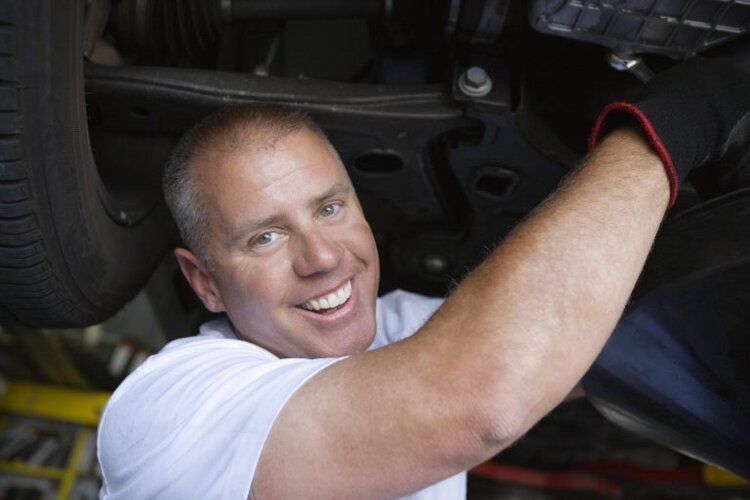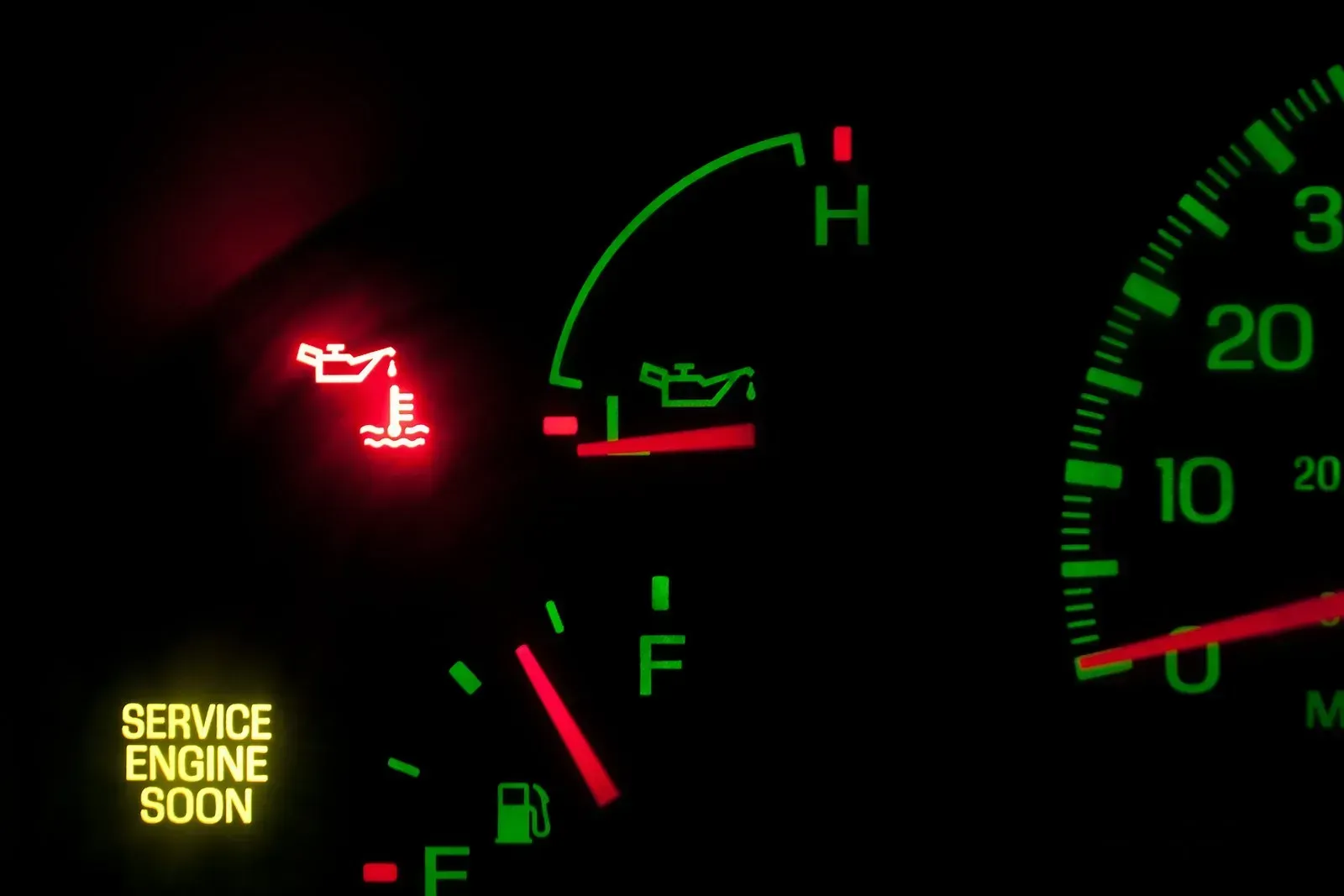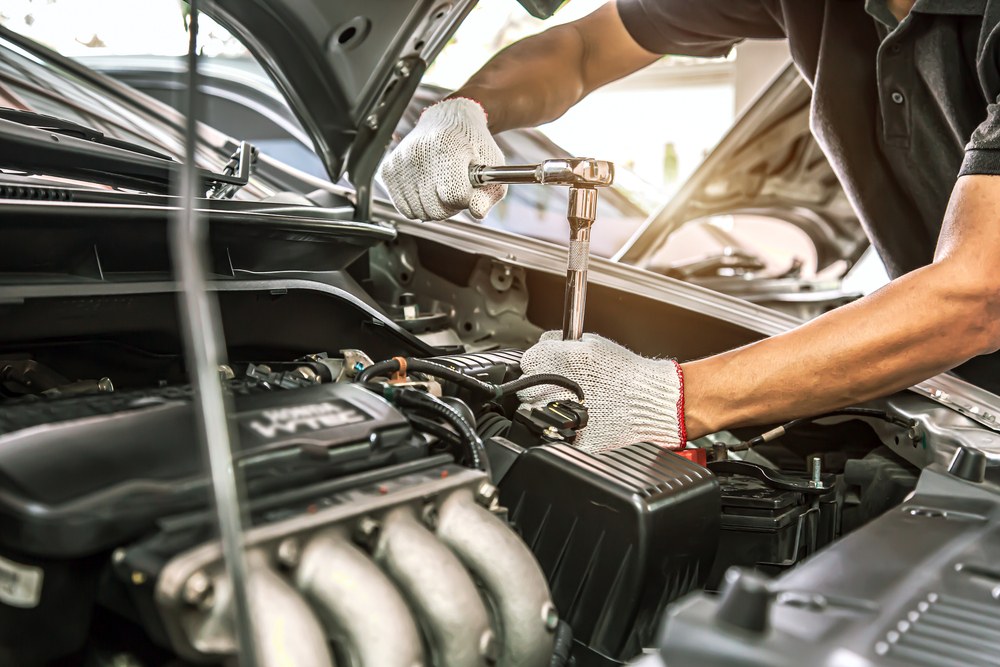How To Check Tire Pressure Without Gauge
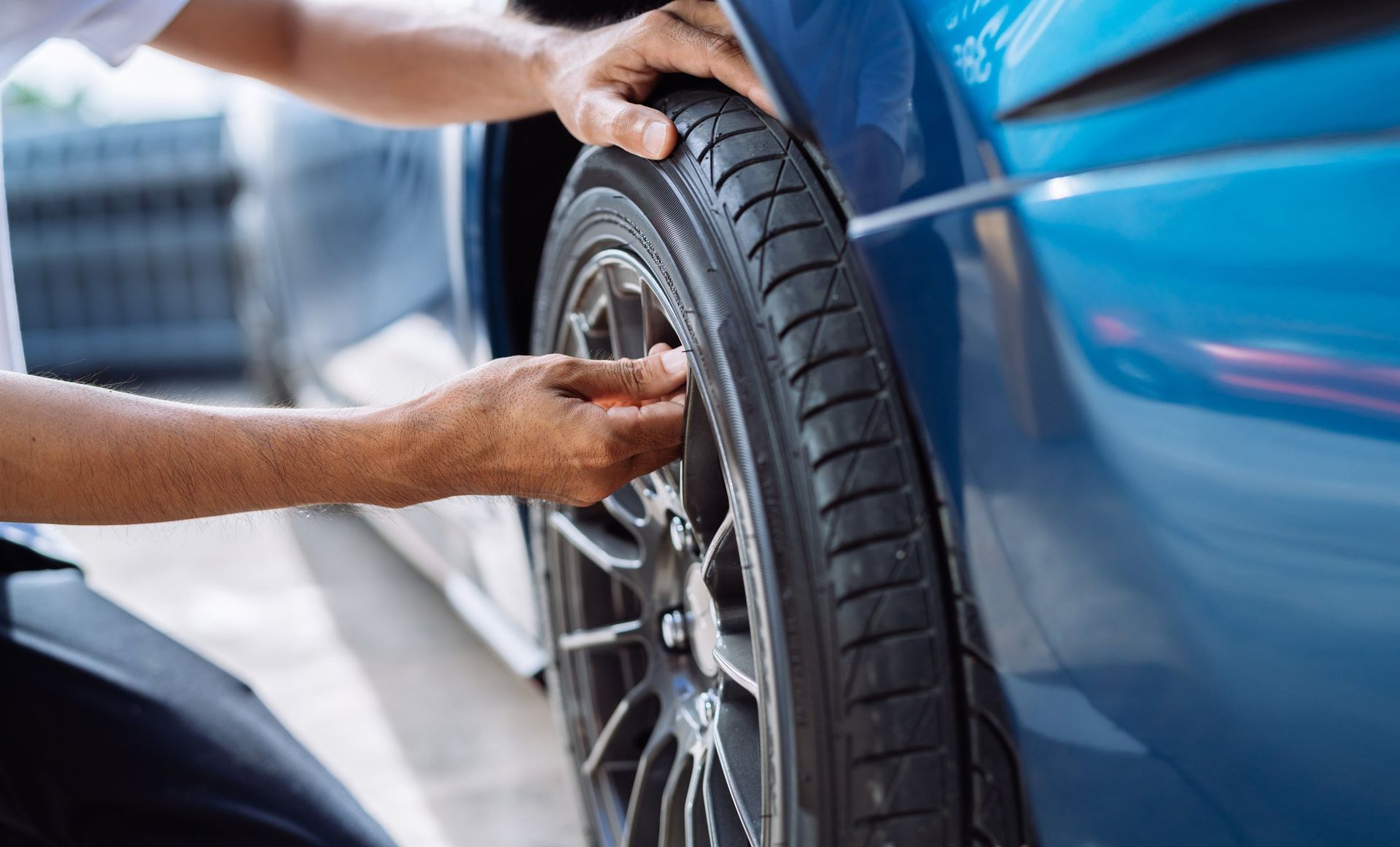
Have you ever asked yourself this question: "How do I check the tire pressure without a gauge?"
If yes, then look no further!
This article will reveal seven practical ways of checking the pressure of your tires when you do not have a gauge at hand.
Also, you will know how often you should check your tire pressure, when to tell if your tires are underinflated, and many more.
Why Do You Need To Check Tire Pressure?
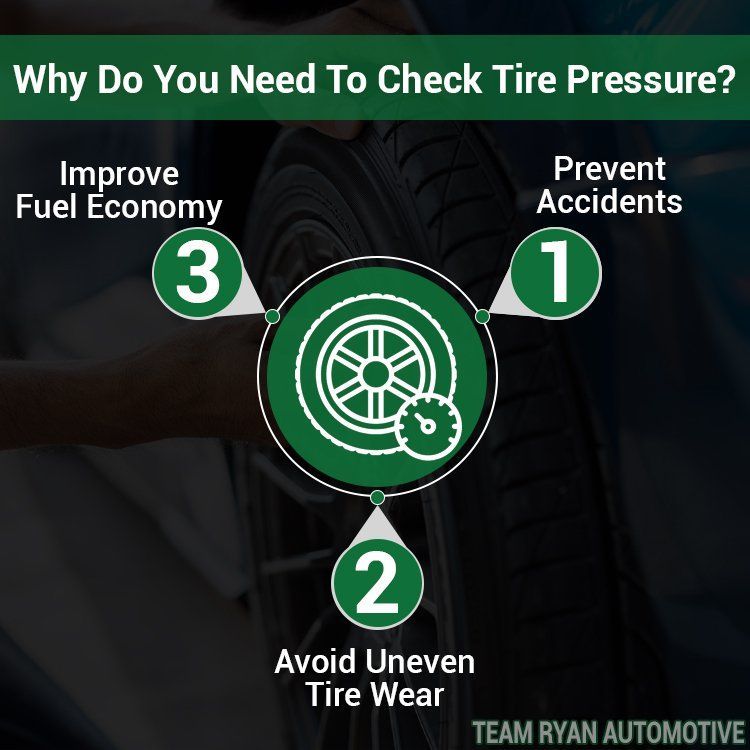
To Prevent Accidents
Low tire pressure causes the rapid loss of tire tread depth in less time than usual. This is because the tires endure more weight and force than when they are correctly inflated. Underinflated tires may also cause poor handling of the car.
Overinflated tires can lead to a blowout during a ride. Regular pressure checks prevent accidents caused by blowouts and poor maneuverability of the car.
To Improve Fuel Economy
Tire pressure checks enhance the fuel economy of your car. Low-pressure tires require more propelling power to get going. This indicates that your vehicle will burn extra fuel to supply the energy needed to move your underinflated tires. So you may notice that you're purchasing gas more often than you should.
To Avoid Uneven Tire Wear
Underinflated tires carry the weight of your vehicle more than the other adequately inflated tires. If the tire pressure is too low, too much of that tire's surface area touches the road, which increases friction. Increased traction may cause the tire to overheat, which can lead to premature wear. Regular checks ensure the uniformity of tire wear.
How To Check Tire Pressure Without Gauge
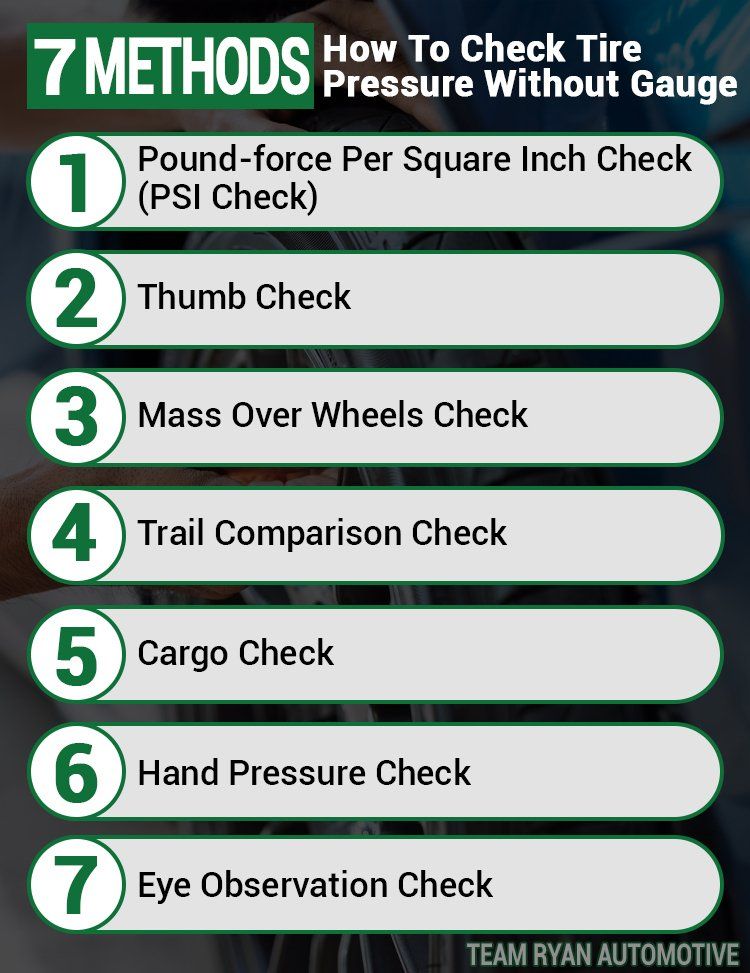
Pound-force Per Square Inch Check (PSI Check)
The pound-force/square inch is the unit used to measure air pressure in your tire. It lets you know how much inflation pressure your tire can withstand. The driver's manual usually provides this information. You may also notice it on the driver's side of the doors.
The number usually suggests the lowest pound-force per square inch at which the tire must be inflated. But you may vary it as you think necessary.
The more the vehicle can carry, the more pressure is needed for proper functioning. The suggested PSI for small cars like minivans and sedans ranges between 27 and 32. But those tires can reach 40 if necessity demands so. SUVs and trucks have a PSI of about 45 and more because their tires need more inflation pressure to carry the vehicle's weight properly.
Take note that some models of pickup trucks have different PSI for the front and rear tires. Check your manual to be sure.
Thumb Check
You can use your thumb to check the pressure of your tire. All you have to do is push your thumb down on the tire to feel the pressure. Underinflated tires will be soft. You will find your tires to be extremely stiff if they are overinflated. The tire pressure is proper if your tire is not too soft or too stiff as mentioned above.
Mass Over Wheels Check
This method is based on checking the level of deformity of the tire once you mount weight on your tires. What you do is to put weight on the tires, and then notice the level of deformity of the tire. Tires with low pressure get deformed by 10% - 15% change. If you see that much difference, you need to inflate your tires a little more. As you add pressure, check gradually to see that the tires do not become extremely stiff.
Trail Comparison Check
For this method, you need a pavement or a road with a flat surface. You need to apply ink or some other marking substance to your tires. After that, make marks on the road by driving the car slightly. After the drive, pay attention to the trail that your tires made. A comparison of the trail will reveal some differences. Low-pressure tires tend to leave a streak when compared with others.
Inflate the underinflated tires a little more and repeat the test until the moderate pressure is reached.
Cargo Check
This test works with cargo. Load some cargo on the car and notice how the tires might get weighed down.
Cargo will logically weigh down any low-pressure tire of your vehicle. If you notice that one side of the car bears the cargo load more than the other, it means you have low-pressure tires that need more air pressure. Find the underinflated tires and add more air to even the distribution of the weight.
But ensure you check and return the tires’ Pound-force Per Square Inch (PSI) to normal by adding more air pressure after you remove the cargo.
Hand Pressure Check
To check your tire pressure with your hand, push your palm down on the tire to feel the pressure. Low-pressure tires are usually soft and cushiony, while overinflated tires are incredibly stiff.
If it feels soft, inflate the tire with more air. Check pressure with your palm gradually as you add air to it. If the air pressure is too much, press the stem on your tire’s air nozzle until a slight push over the tire is possible.
Eye Observation Check
To check your tire pressure with this method, you must first park your car on a plane surface. After parking it, check the tires of your vehicle from both sides. What you are looking out for is a bulge; a round swelling from any side of the tire.
A bulge of more than ten millimeters on both sides shows that your tire pressure is low. You may have to pump the tires before taking the vehicle out. Inflate the tires until it is hard but not extremely hard.
How Often Should You Check Your Tire Pressure?
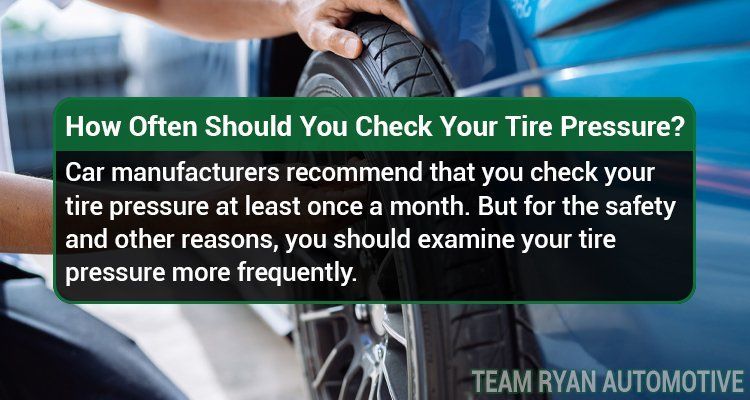
Car manufacturers recommend that you check at least once a month. But safety and other reasons may make you have to examine your tire pressure more frequently.
Ideally, you should visually observe your tire pressure every time you approach your car.
Try to regularly check your tire pressure when you visit the gas station.
If you hit a curb or run over a sharp object, you may also have to check your tire pressure.
How Do You Know If Your Tire Pressure Is Low?
Some recent vehicle models have a warning light in the dash to alert you. The warning light is a component of the Tire Pressure Monitoring System of your vehicle. The light comes on to warn you that your tires could be underinflated.

If your car does not have a caution light for low tire pressure, a regular check will help you know if your tire pressure is too low.
Difficulty in the car's maneuverability or losing speed is also a sign that the tire pressure may be low.
Is It Safe To Drive With Low Tire Pressure?
It, it isn’t. It is dangerous to drive with low tire pressure, especially at high speeds. You could lose control of your vehicle. More seriously, driving with low tire pressure could also cause a blowout or an accident.
Conclusion
Driving with the correct tire pressure is very important because you can protect your safety and the safety of other road users. It also saves you money because your tires wear evenly, and your fuel economy is optimal.
If you do not have a gauge with you, the reliable steps above-mentioned work just fine.
Guest Author: Tim Miller
I’m Tim Miller, an auto mechanic and the Editor-in-chief at obdadvisor.com. I love writing to share my experiences and expertise. Many articles about car repair, car parts and tools reviews can be found on my website. Get connected with me on Facebook, Twitter and Linkedin.
